- Home
- John Berger
And Our Faces, My Heart, Brief as Photos Page 4
And Our Faces, My Heart, Brief as Photos Read online
Page 4
Every life is both created by, and held in, the encounter of these two opposing forces. To speak of such “holding” is another way of defining Being. What is so baffling and mysterious about Being is that it represents both stillness and movement. The stillness of an equilibrium created by the movement of two opposing forces.
The force of sexuality is forever unfinished, is never completed. Or, rather, it finishes only to re-begin, as if for the first time.
Differently, the ideal of love is to contain all. “Here I understand,” wrote Camus, “what they call glory: the right to love without limits.” This limitlessness is not passive, for the totality which love continually reclaims is precisely the totality which time appears to fragment and hide. Love is a reconstitution in the heart of that holding which is Being.
ONCE IN A SONG
A singer may be innocent
never the song. With its instantaneous eyes
opened on to the world
and its heart laid bare,
the song is brazen,
the song is newborn.
Only when it has quietened
can listeners resume by habit
the innocence of their age.
When a great singer sings, the skin of space and of time go taut, the voices of the newborn fill the world, there is no comer left of silence or of innocence, the gown of life is turned inside out, the singer becomes earth and sky, time past and time to come are singing one of the songs of a single life.
Age. Date and place of birth.
Permanent address.
Date of entry into the country
ONCE IN THE HIGHLANDS
The crofters’ cottages crouch like animals sheltering on the ground for the night. Everything moves on, the larches, the bracken, the caledonian pines, the heather, the juniper bushes, the scrap grass. And then moving into the land, water: the rivers running to the sea, the sea with its tides filling lochs. And across both land and water the wind. And, above all, the northwest wind. The honking of the wild geese in the sky is like a fleeting measure, a counting in another algebra, of all this movement.
There are castles, there are lines which could be and have been defended, deaths, but there are no final barriers. This is why herring can be fished from water surrounded by brackened hills. This is why the sky can appear to have more flesh on it, to be more hospitable, than the land. Here between the land and sky it is like a shore. And as the seashore smells of seaweed, so this shore smells of uncounted time.
The uncounted time is heavy with a sense of loss. The Highlands lament those who have disappeared, supremely those who were forced to disappear. The number of those chased from the land during the clearances enters the inconsolable algebra of the geese.
Among the first islands off the western coast is Gigha. Five hundred years ago on its southern tip the islanders built a small chapel. It stood for three centuries and then fell into ruin. Around the chapel is a cemetery. The tombstones are not very different from those in other European cemeteries. Many record the deaths of several generations: the name, the year of birth, the day of death and the place of death, if it was not on the island. A name and two dates, the last one precise to the very day. This is what is recorded. About what happened between, apart from the bare fact of survival, not a word is written.
Salt, rain, lichen, and the wind efface the deepest-cut letters within a century or two. Why inscribe even the name and the two dates? The same question might be asked in any cemetery, but here, on the island, the answer is more evident.
The inscriptions are not for the living. Those who remembered the dead had no need to be reminded. What is inscribed is a form of identification and the identifications are addressed to a third party. The tombstones are letters of recommendation to the dead, concerning the newly departed, written in the hope that they, who have left, will not need to be renamed.
From the cemetery you and I looked across the straits, to the sea, to the sky above the sea and, far away, to the brackened mountains. The coastline there is sloped like the passage for a birth outwards—towards the open Atlantic. To this birthplace the nomadic dead travel. They are within speaking distance. The living do not know how to speak their language. Our stories are not read by the dead.
On your island
does the night fall later?
Am I walking a little ahead of you
so that no snake will bite
your sandalled foot?
The balance is never made.
This is why the stars are silent
offering no account.
How to measure
a season
against
the calendar of your absence?
How to measure
the stream
of my tangled light
in the mountain
of what has been
and will be?
The balance is never made.
Yet in the night your eyes and mine
sounding one another
show no trace of vertigo.
Part Two: Is about Space
2/Here
DISTANCE
You have filled the thermos with coffee
packed our footprints if needed
to throw into the jaws
of the untestifying
eternal snow.
Together as carpenters with hammers
we have taught the distance
how to build a roof
from the trees
we run between.
In the silence behind
we no more hear the faraway
question of the summer house:
And tomorrow where
shall we go?
At dusk the harnessed dogs fear
there is no end to the forest.
And each night in the snow
we calm them
with our surprising laughter.
The visible has been and still remains the principal human source of information about the world. Through the visible one orientates oneself. Even perceptions coming from other senses are often translated into visual terms. (Vertigo is a pathological example: originating in the ear, one experiences it as a visual, spatial confusion.) It is thanks to the visible that one recognizes space as the precondition for physical existence. The visible brings the world to us. But at the same time it reminds us ceaselessly that it is a world in which we risk to be lost. The visible with its space also takes the world away from us. Nothing is more two-faced.
The visible implies an eye. It is the stuff of the relation between seen and seer. Yet the seer, when human, is conscious of what his eye cannot and will never see because of time and distance. The visible both includes him (because he sees) and excludes him (because he is not omnipresent). The visible consists for him of the seen which, even when it is threatening, confirms his existence, and of the unseen which defies that existence. The desire to have seen—the ocean, the desert, the aurora borealis—has a deep ontological basis.
To this human ambiguity of the visible one then has to add the visual experience of absence, whereby we no longer see what we saw. We face a disappearance. And a struggle ensues to prevent what has disappeared, what has become invisible, falling into the negation of the unseen, defying our existence. Thus, the visible produces faith in the reality of the invisible and provokes the development of an inner eye which retains and assembles and arranges, as if in an interior, as if what has been seen may be forever partly protected against the ambush of space, which is absence.
Both life itself and the visible owe their existence to light. Before there was life, nothing was seen—unless by God. Neither the optical explanation of visual perception nor the evolutionist theory of the slow, hazardous development of the eye in response to the stimulus of light—neither of these dissolve the enigma which surrounds the fact that, at a certain moment, the visible was born, at a certain moment appearances were revealed as appearances. As a response to this enigma, the first faculty acc
redited to the most important gods was that of sight: an eye, often an all-seeing eye. Then it could be said: The visible exists because it has already been seen.
The Genesis story is consistent with this. The first thing God created was light. After every subsequent act of creation, the light allowed him to see that what he had created was good. At the end of the sixth day he saw everything that he had made and, behold, it was very good.
The Genesis story acknowledges the mystery of the visible’s coming into being. This mystery is sustained and repeated in the universal experience of what has come to be called natural beauty. Whatever normative categories are employed, such beauty is always experienced as a form of revelation. It is felt to speak.
A waterfall is a waterfall is a waterfall. Its appearance and significance, look and meaning, become identical, whereas usually they are separate and have to be brought together by the one who is looking and questioning. Beauty’s revelation is this fusion. Such a fusion changes one’s spatial sense, or, rather, changes one’s sense of Being in space.
The boundlessly visible includes but also excludes man. He sees, and he sees that he is being continually abandoned. Appearances belong to the boundless space of the visible. With his inner eye man experiences the space of his own imagination and reflection. Normally it is within the protection of this inner space that he places, retains, cultivates, lets run wild or constructs Meaning.
At the moment of revelation when appearance and meaning become identical, the space of physics and the seer’s inner space coincide: momentarily and exceptionally the seer achieves an equality with the visible. To lose all sense of exclusion; to be at the center.
The post office was large and I suspect that its director was either inefficient or vicious; there was something demoralized about the staff behind the counter, as if unnecessary absurdities had been added to their burden of overwork.
There was invariably a long queue for the Poste Restante, probably because it was a frontier town. Sometimes there was one letter from you, sometimes several. For each letter I paid the price of half a loaf of bread.
The austerity of the large hall—the post office was built in the 1930s—must once have been thought of as a civic virtue, just as its spaciousness had been conceived as an expression of social hope. Now it looked bare, run-down, faceless.
Most of the staff were women of about your age. When I saw your handwriting on the envelope, which the woman behind the counter was still holding in her hand, I heard your voice. Hearing it was not like remembering it. To remember is to recall. There in the central post office, with its imitation marble floor that amplified every footstep and shuffle—it was I who was called.
A voice belongs first to a body, then to a language. The language may change but the voice stays the same. I recognize your voice before I know in what language you are speaking. In the post office you pronounced the name you had written on the envelope, yet it was not the two words which I heard, it was your voice.
It coexisted, your voice, with all the other events of the same moment: the Tunisian trying to phone his family in Djebeniana, the woman coming to fetch her mail-order parcel, the office clerk posting a hundred letters, the old man drawing his pension.
Perhaps it did not have to travel far; the distance between your voice and my ear was infinitesimal. But reality should never be confused with scale, it is only scale that has degrees.
The larger is not more real—if we tend to believe it is, the tendency is perhaps a vestige of the fear reflex to be found in all animals, in face of another creature larger than themselves. It is more prudent to believe that the large is more real than the small. Yet it is false. In death it is scale that falls apart; just as, at conception, a point fuses with the universe to create scale. If we are trapped, my heart, it is not within reality.
Perhaps lilac is the most abundantly feminine of flowers. It came from Eastern Europe and was imported into the West in the sixteenth century. A Slav flower.
Among the mountains here, the lilac trees flower at the time when the first cuckoos sing. Cuckoos and lilac come as a pair. The cuckoo is pure impudence. Later when he falls silent after mating, he eats grubs and caterpillars—even those which are poisonous for other birds—with impunity.
The scent of lilac, you once said, is not so far from the smell of cows in the stable. Both are smells of peace and procrastination.
The days are becoming long, and in the evening I sit in the kitchen reading without a light. On the windowsill is a jug with a flowering branch of lilac, which I cut in a friend’s garden. It is pale purple, the color of a much-washed ultramarine blue shirt. When I was young, I had a shirt of that color, and the great Indonesian painter, Affandi, painted a portrait of me in it. Both portrait and shirt have disappeared. Through the open window I can hear a cuckoo, and the chain saws of the woodcutters still working.
When I glanced up a moment ago, the branch of lilac in the fading light looked like a distant hill of blossoming trees merging into the dusk. It was disappearing.
The walls of the house are thick, for the winters are cold. On the window embrasure, close to the windowpanes, hangs a shaving mirror. As I look up now, I see reflected in the mirror a sprig of the lilac branch: each petal of each tiny flower is vivid, distinct, near, so near that the petals look like the pores of a skin. At first I do not understand why what I see in the mirror is so much more intense than the rest of the branch which, in fact, is nearer to me. Then I realize that what I am looking at in the mirror is the far side of the lilac, the side fully lit by the last light of the sun.
Every evening my love for you is placed like that mirror.
“Philosophy is really homesickness, it is the urge to be at home everywhere.”—Novalis
The transition from a nomadic life to a settled one is said to mark the beginning of what was later called civilization. Soon all those who survived outside the city began to be considered uncivilized. But that is another story—to be told in the hills near the wolves.
Perhaps during the last century and a half an equally important transformation has taken place. Never before our time have so many people been uprooted. Emigration, forced or chosen, across national frontiers or from village to metropolis, is the quintessential experience of our time. That industrialization and capitalism would require such a transport of men on an unprecedented scale and with a new kind of violence was already prophesied by the opening of the slave trade in the sixteenth century. The Western Front in the First World War with its conscripted massed armies was a later confirmation of the same practice of tearing up, assembling, transporting and concentrating in a “no-man’s-land.” Later, concentration camps, across the world, followed the logic of the same continuous practice.
All the modern historians from Marx to Spengler have identified the contemporary phenomenon of emigration. Why add more words? To whisper for that which has been lost. Not out of nostalgia, but because it is on the site of loss that hopes are born.
The term home (Old Norse Heimr, High German heim, Greek kōmi, meaning “village”) has, since a long time, been taken over by two kinds of moralists, both dear to those who wield power. The notion of home became the keystone for a code of domestic morality, safeguarding the property (which included the women) of the family. Simultaneously the notion of homeland supplied a first article of faith for patriotism, persuading men to die in wars which often served no other interest except that of a minority of their ruling class. Both usages have hidden the original meaning.
Originally home meant the center of the world—not in a geographical, but in an ontological sense. Mircea Eliade has demonstrated how home was the place from which the world could be founded. A home was established, as he says, “at the heart of the real.” In traditional societies, everything that made sense of the world was real; the surrounding chaos existed and was threatening, but it was threatening because it was unreal. Without a home at the center of the real, one was not only shelterless, but also lost in non
-being, in unreality. Without a home everything was fragmentation.
Home was the center of the world because it was the place where a vertical line crossed with a horizontal one. The vertical line was a path leading upwards to the sky and downwards to the underworld. The horizontal line represented the traffic of the world, all the possible roads leading across the earth to other places. Thus, at home, one was nearest to the gods in the sky and to the dead in the underworld. This nearness promised access to both. And at the same time, one was at the starting point and, hopefully, the returning point of all terrestrial journeys.
The crossing of the two lines, the reassurance their intersection promises, was probably already there, in embryo, in the thinking and beliefs of nomadic people, but they carried the vertical line with them, as they might carry a tent pole. Perhaps at the end of this century of unprecedented transportation, vestiges of the reassurance still remain in the unarticulated feelings of many millions of displaced people.
Emigration does not only involve leaving behind, crossing water, living amongst strangers, but, also, undoing the very meaning of the world and—at its most extreme—abandoning oneself to the unreal which is the absurd.
Emigration, when it is not enforced at gunpoint, may of course be prompted by hope as well as desperation. For example, to the peasant son the father’s traditional authority may seem more oppressively absurd than any chaos. The poverty of the village may appear more absurd than the crimes of the metropolis. To live and die amongst foreigners may seem less absurd than to live persecuted or tortured by one’s fellow countrymen. All this can be true. But to emigrate is always to dismantle the center of the world, and so to move into a lost, disoriented one of fragments.

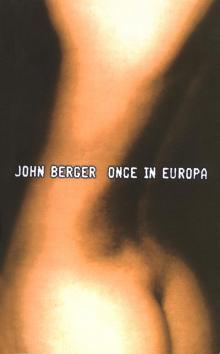 Once in Europa
Once in Europa To the Wedding
To the Wedding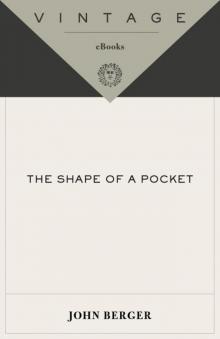 The Shape of a Pocket
The Shape of a Pocket Here Is Where We Meet
Here Is Where We Meet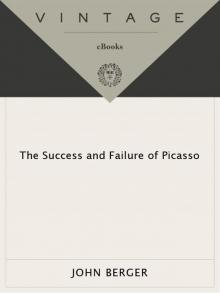 The Success and Failure of Picasso
The Success and Failure of Picasso G.
G. Photocopies: Encounters
Photocopies: Encounters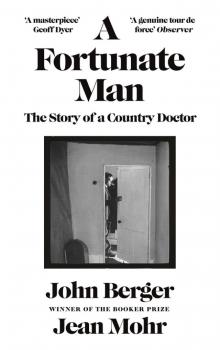 A Fortunate Man: The Story of a Country Doctor
A Fortunate Man: The Story of a Country Doctor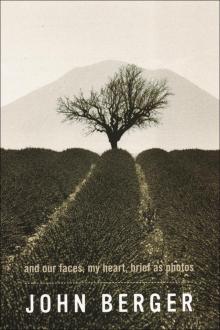 And Our Faces, My Heart, Brief as Photos
And Our Faces, My Heart, Brief as Photos Titian
Titian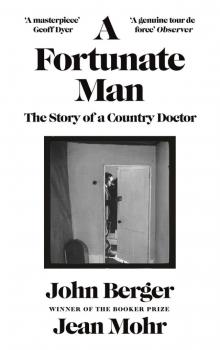 A Fortunate Man
A Fortunate Man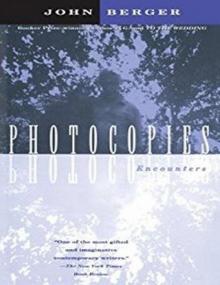 Photocopies: Encounters (Vintage International)
Photocopies: Encounters (Vintage International) Selected Essays of John Berger
Selected Essays of John Berger